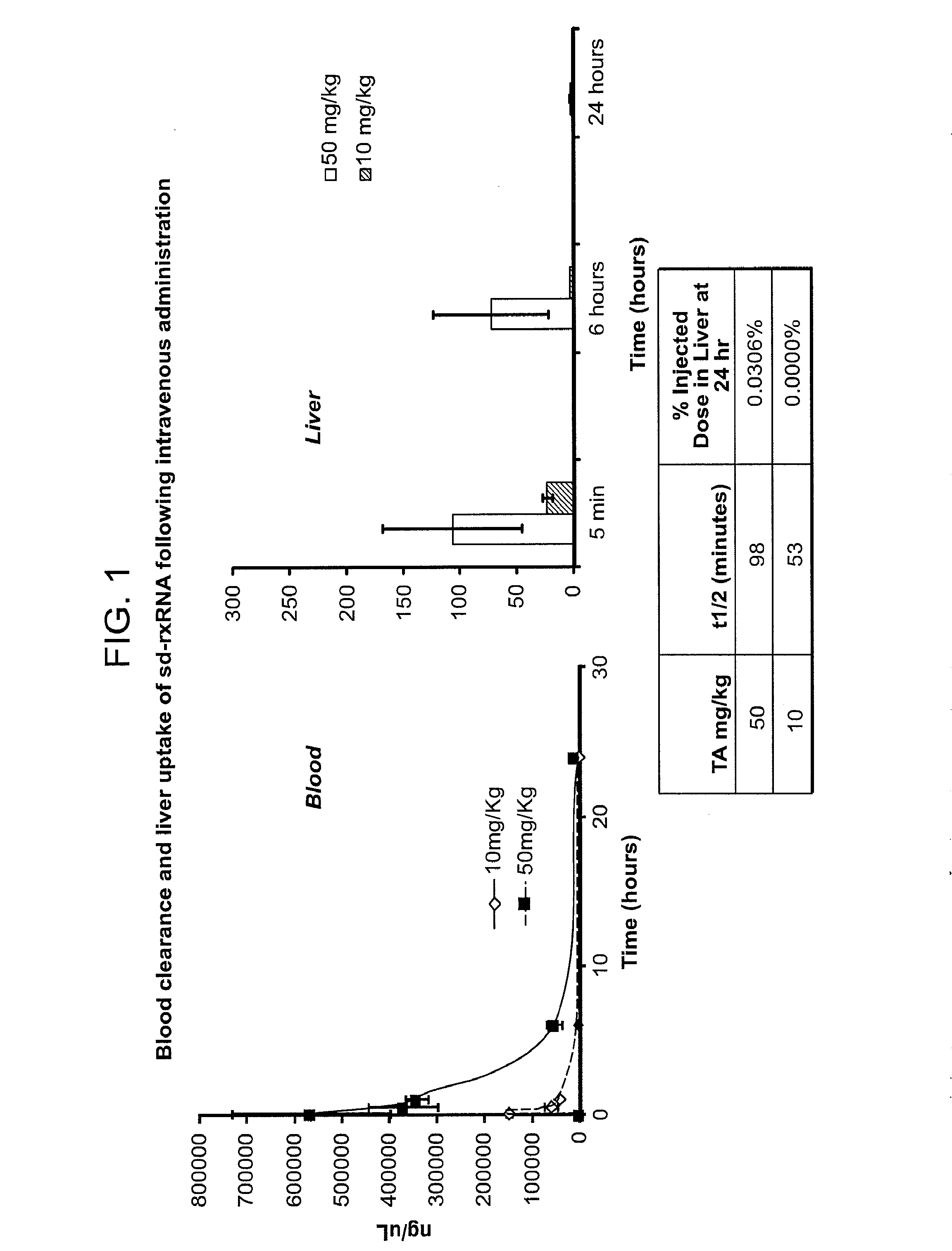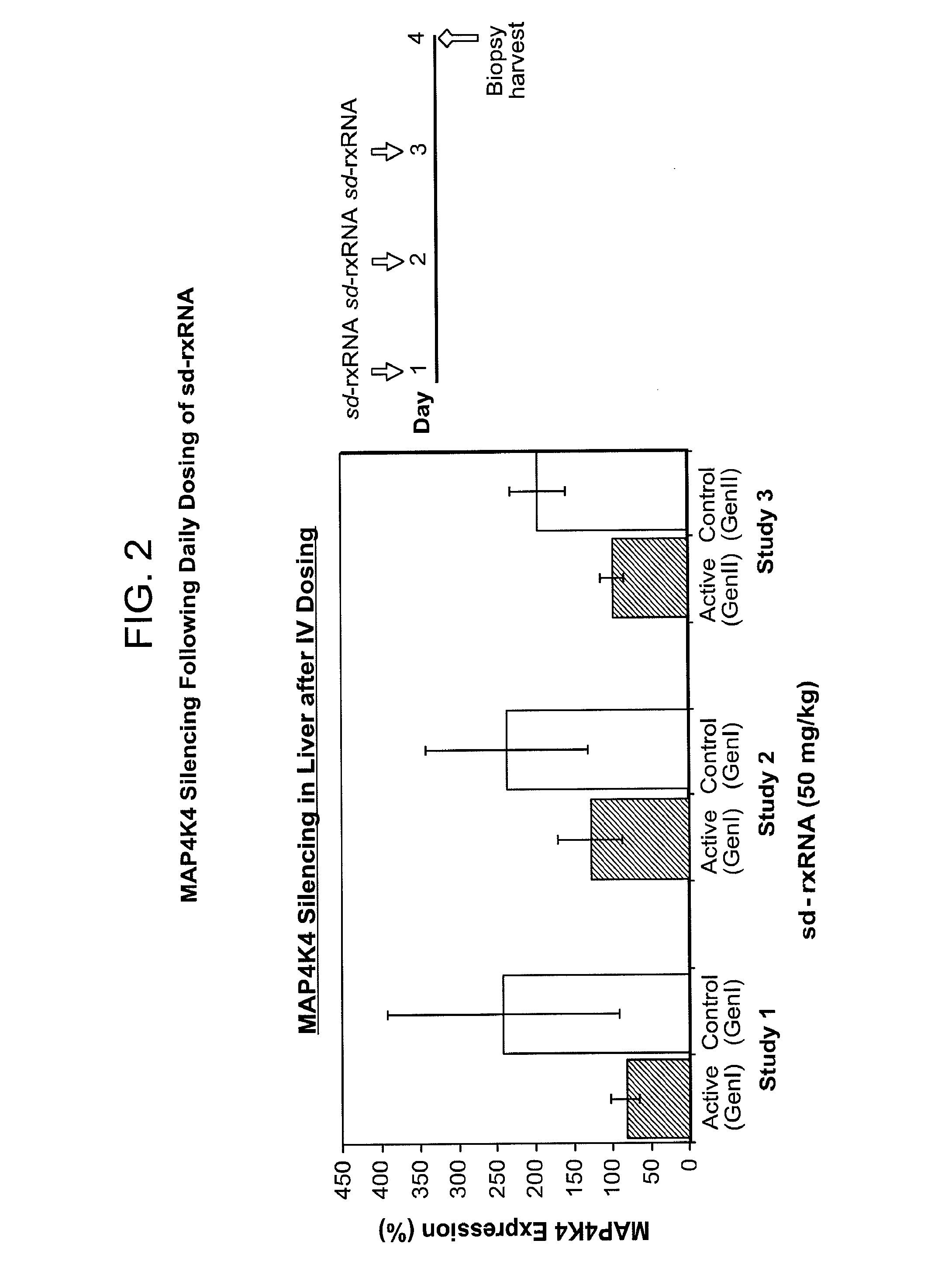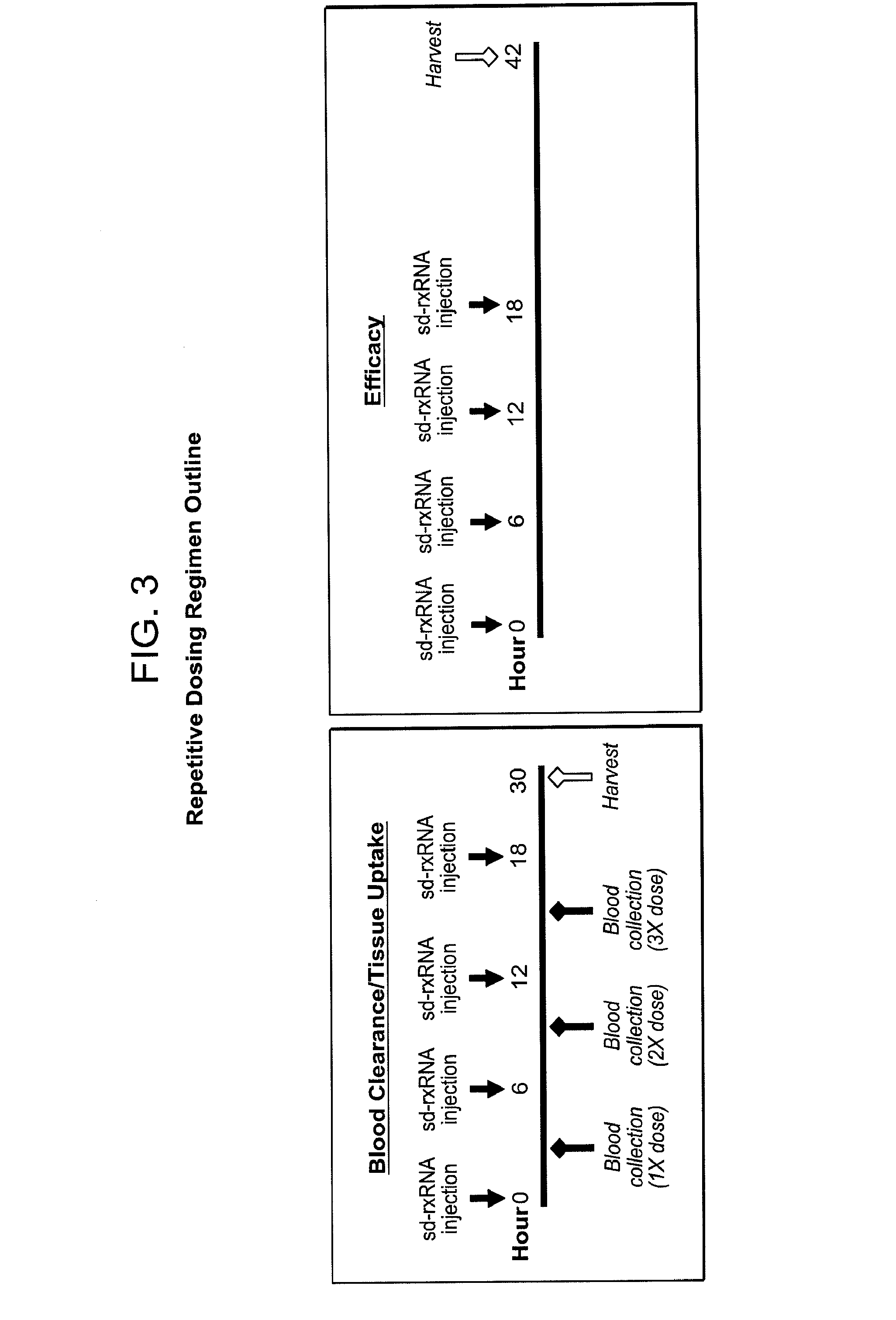Reduced size self-delivering rnai compounds
a technology of rnai and compounds, applied in the field of rna interference, can solve the problems of inability to deliver rod type molecule through the cell-membrane, the inability to achieve the intended efficient inhibition of gene expression (including protein synthesis) using such compositions in vivo, and the inability to achieve the effect of efficient systemic delivery and increased stability
- Summary
- Abstract
- Description
- Claims
- Application Information
AI Technical Summary
Benefits of technology
Problems solved by technology
Method used
Image
Examples
example 1
Systemic Delivery of sd-rxRNA Through Intravenous Administration
[0551]sd-rxRNA molecules were efficiently delivered systemically to remote target tissues such as the liver and heart using intravenous administration. Systemic delivery resulted in efficient compound uptake and silencing in target tissues. As shown in FIG. 1, blood clearance of the sd-rxRNA molecule is affected by the concentration of the molecule. Half-lives of sd-rxRNA molecules, delivered at 10 mg / kg or 50 mg / kg are shown in FIG. 1. sd-rxRNA was detected in the liver after 6 hours but no significant signal was detected after 24 hours.
[0552]Daily dosing schedules were tested for intravenous delivery of sd-rxRNA targeting MAP4K4 and silencing of MAPK4K in the liver was determined (FIG. 2). Male BALB / c6J mice, 6-8 weeks of age were used, with 5 mice in each test group. 50 mg / kg of sd-rxRNA was administered via tail vain injection daily for 3 days and then samples were harvested on day 4.
[0553]sd-rxRNA molecules with ge...
example 2
Subcutaneous Administration of sd-rxRNA
[0557]Efficient delivery of sd-rxRNA molecules was also achieved through subcutaneous delivery. In conditions described herein, equal dosages of subcutaneously administered sd-rxRNA molecules resulted in higher sd-rxRNA presence in target tissues than achieved through intravenous administration. FIG. 7 reveals a comparison of subcutaneous and intravenous administration for efficacy in liver. For both intravenous and subcutaneous administration, a single bolus of 80 mg / kg sd-rxRNA was administered. Blood levels were determined by a hybridization assay and fluorescence visualization was conducted by confocal microscopy.
[0558]The route of administration was found to have an impact on clearance kinetics, blood levels and tissue uptake (FIG. 8). Compound clearance (indicated by pink urine) was detected for 30 minutes past intravenous administration and for 6-8 hours past subcutaneous administration. Blood concentration increases for at least 4 hours...
example 3
Respiratory Applications of sd-rxRNA
[0560]sd-rxRNA molecules were found to be efficiently delivered to a variety of cell types in the lung through insufflation. FIGS. 13-14 reveal efficient delivery of sd-rxRNA to mouse lungs at 1-44 mg / kg and to rat lungs at 1-10 mg / kg. sd-rxRNA are preferentially taken up by alveolar macrophages. In mouse tissue, the fluorescent signal was detected primarily in macrophages at up to 20 mg / kg, but in tissue and macrophages at 44 mg / kg. FIG. 15 reveals efficient delivery of sd-rxRNA compounds to alveolar macrophages. Cell type identification was based on visualization. Some delivery to other cell types was also observed, but under tested conditions, no visible delivery to ciliated epithelial cells was observed.
[0561]Visualization of sd-rxRNA-DY547 delivered by insufflation in isolated lung macrophages is demonstrated in FIG. 16. Male BALB / c mouse lungs were minced and incubated in collagenase for 30 minutes. Cells were strained through a 70 micron fi...
PUM
| Property | Measurement | Unit |
|---|---|---|
| hydrophobic | aaaaa | aaaaa |
Abstract
Description
Claims
Application Information
 Login to View More
Login to View More - R&D
- Intellectual Property
- Life Sciences
- Materials
- Tech Scout
- Unparalleled Data Quality
- Higher Quality Content
- 60% Fewer Hallucinations
Browse by: Latest US Patents, China's latest patents, Technical Efficacy Thesaurus, Application Domain, Technology Topic, Popular Technical Reports.
© 2025 PatSnap. All rights reserved.Legal|Privacy policy|Modern Slavery Act Transparency Statement|Sitemap|About US| Contact US: help@patsnap.com



